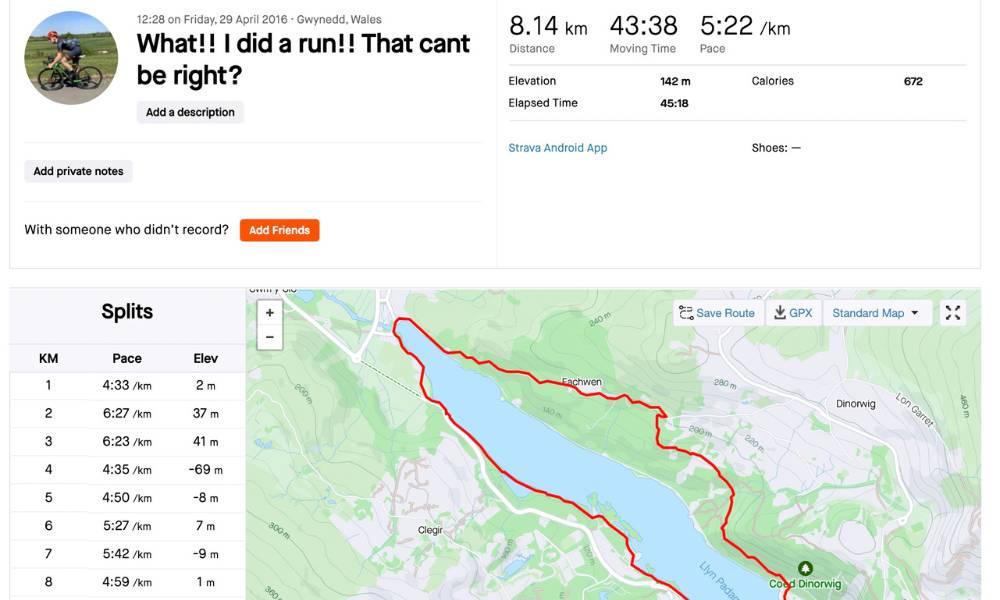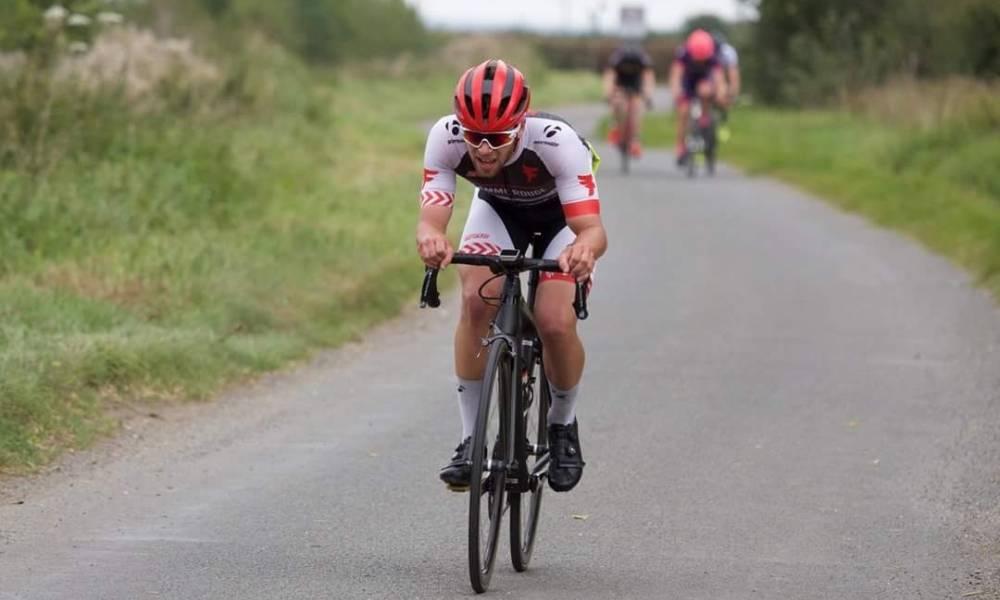Running especially long-distance running is simply not like anything else.
There are two ways you can find your way to running, the first way is to turn to it as a way to build up your fitness. If you have taken a long break from regular exercise for whatever reason this is most likely the camp you fall into. If this is you then congratulations, you have picked one of the best activities in my opinion for getting fitter and improving your overall health.
Starting out your running journey in this camp you have a plethora of products and plans put there to get you to some of the milestones of endurance running. Most notably ‘Couch to 5k’ is a wonderfully paced plan to get you to go from zero running experience through to completing a 5k in only a matter of weeks. Beyond this, there is ‘Couch to 10k’ and plenty of other plans to continue your pathway through to a marathon and beyond. The beauty of taking up running as a beginner to endurance sport is everything progresses together. Your cardiovascular endurance increases as your muscular strength also develops and these both follow in line with the mental resilience that forms through the course of training. These steady and mostly balanced increases are a great way to progress your running.
If this sounds like it fits the bill for you that is wonderful however this article is not for you. This article looks at how athletes from other sports who might have one or two of these elements in shed loads can safely transition to running without finding themselves injured again and again. As a cyclist for many years and having competed at a national level in races of up to 180km when I decided that running was something I wanted to invest my time in I found myself in a strange position that came as a surprise. My fitness from cycling didn’t transfer all that well over to running. I had tonnes of cardiovascular endurance and my mental resilience would carry me through any training session however my body was not adapted to what I was asking it to do. If this sounds like you then I can only empathise with you because the position you start your running journey from can be incredibly frustrating.
I was used to heading out for 4-5 hour rides day after day with parts of these rides right on my physical limit to push my performance ceiling just that little bit higher. A typical week of training could be between 400-600km and I would do this week in and week out for most of the year. This meant that when I decided to take on my first run in April 2016 I was certain that I would easily be able to run a simple 8km loop of Llyn Padarn in Snowdonia. At this time I was building up to a season of road racing feeling as fit as a fiddle. This 8km run left me unable to walk for the best part of four days and reduced that week's training down to simple easy rides as that is all I could manage.

This became a very common theme in the turbulent years of my running career which saw me have a very on-again-off-again relationship with the sport. The first few runs would leave me useless to anyone for days afterwards until my muscles finally grew familiar with what I was asking from them. This would typically take around a month and in this time I would invariably pick up some sort of injury that would have me hanging up my shoes and returning to the sanctity of my bike.
Although it might seem obvious to you and believe me it is now blindingly apparent to me I was simply writing cheques that my body could not cash. My cardiovascular fitness from cycling meant that the typical limiters that prevent new runners from getting injured were not there. My mindset also allowed me to suffer deep into the pain cave which quickly became part of my fast track to injury.
Finally, after way too many cycles of running and getting injured, I finally cracked the code. A lot of the lessons I have learned on my journey to where I am today have been discovered the hard way and by realising that running really has no space for ego. No matter what level of fitness you come to running with, everyone starts as a beginner.
Running is hard on your body
Regardless of what fitness you have whether it is from swimming, cycling, hiking, skiing or any number of activities running is unlike anything else. If you feel that you have a good level of cardiovascular fitness then the first 6 months of your running journey are going to focus mostly on self-discipline to hold yourself back. The reality is that you will be able to run, faster and further than your body can sustainably handle. Sure, heading out for a full gas 10k one day might not cause any issues but doing that three times a week like you feel you can will soon have you struggling to get out of bed in the morning.
Taking things easy is the main part of getting started. Gradually introducing running into your exercise schedule is the most sustainable way to introduce it. Keep cross-training with whatever other exercise you have been doing. Save your hard workouts for then and keep your runs for your easy days or as a second workout. The unfortunate reality is that if you are looking to only run whilst you get started, the volume you are able to complete sustainably, week after week is going to be underwhelmingly low. Running is tough on your muscles, bones, joints, ligaments and tendons. For all but the first in that list the rate at which these can adapt to the training stimulus provided by running is very slow with time scales measured in months rather than weeks. Give it time and as cliche as it might sound listen to your body, no niggle has ever gone away by doing an extra run.
Strength training is essential
In some sports, you can get away with simply doing the activity and that is enough training on its own. Running is not one of these sports. The repetitive motion of running paired with the continuous impact it puts on our lower body means that you need to give it a helping hand.
The sooner you incorporate some strength and conditioning into your weekly routine the less likely you are to run into easily preventable injuries. Working specifically around the hip flexors, calves and glutes is a great place to start as these areas take a lot of abuse whilst running. Working on each leg independently can also help with reducing any asymmetries that you may have which in my experience can be a large part of the cause of common injuries. Runners new to endurance sport can often forego strength and conditioning work for a while as their bodies will naturally strengthen through the regular running however, if you are coming in with a higher level of fitness getting right on top of strength and conditioning is essential.
Racing should be fun
If you come from a competitive background or have competed in another sport the likelihood is that you will sooner or later look to pin a number on and take to the start of a running race. I wholeheartedly encourage you to do so with one caveat in place. No matter how good you have been at another sport, that counts for nothing when you line up for your first running race.
The first thing to remember is a race doesn’t have to be against anyone else or against the clock for that matter. It can simply be an event where you decide to push yourself to find out what you are capable of.
Racing gives you a firm date to build towards a distance to train for and it also gives you a lovely marked-out route to follow with loads of other like-minded people. I’m not saying it is necessary but entering some races is super fun. Depending on what your sporting background is, running is also considerably more friendly than other sports with a far more relaxed and social vibe to it that is addictive regardless of how the race goes and your final placing. Races should be a celebration of your running and everything you have put in to get there. The fastest way to ruin a race day is to turn up with a target time in mind, leave that ego at home for at least your first year of running and just enjoy the process.
Embrace the suck
No matter what physical level you come to running with there are going to be plenty of times when reality slaps you in the face and reminds you that you suck. Whether that is heading out for a longer run than you have attempted in the past and failing catastrophically or going for a PB park run only to find yourself gasping for air with your hands on your knees 3km in. We have all been there. In my opinion, one of the best parts of getting started in running with a preexisting level of fitness is how much it humbles you. Taking a step back and having to take things slow and work at something from the ground up can be a rewarding process that is missing from your main sport.
All too often we are scared as adults to try something new and be bad at it, we all too quickly attach our self-worth to our abilities meaning that when we fail doing something we see ourselves as a failure. Taking the plunge away from something you are performing at a high level and starting way back down the ladder is an experience that can teach you so much about yourself. Trusting the process and leaving the ego at the door is the quickest way to see your running progress.
